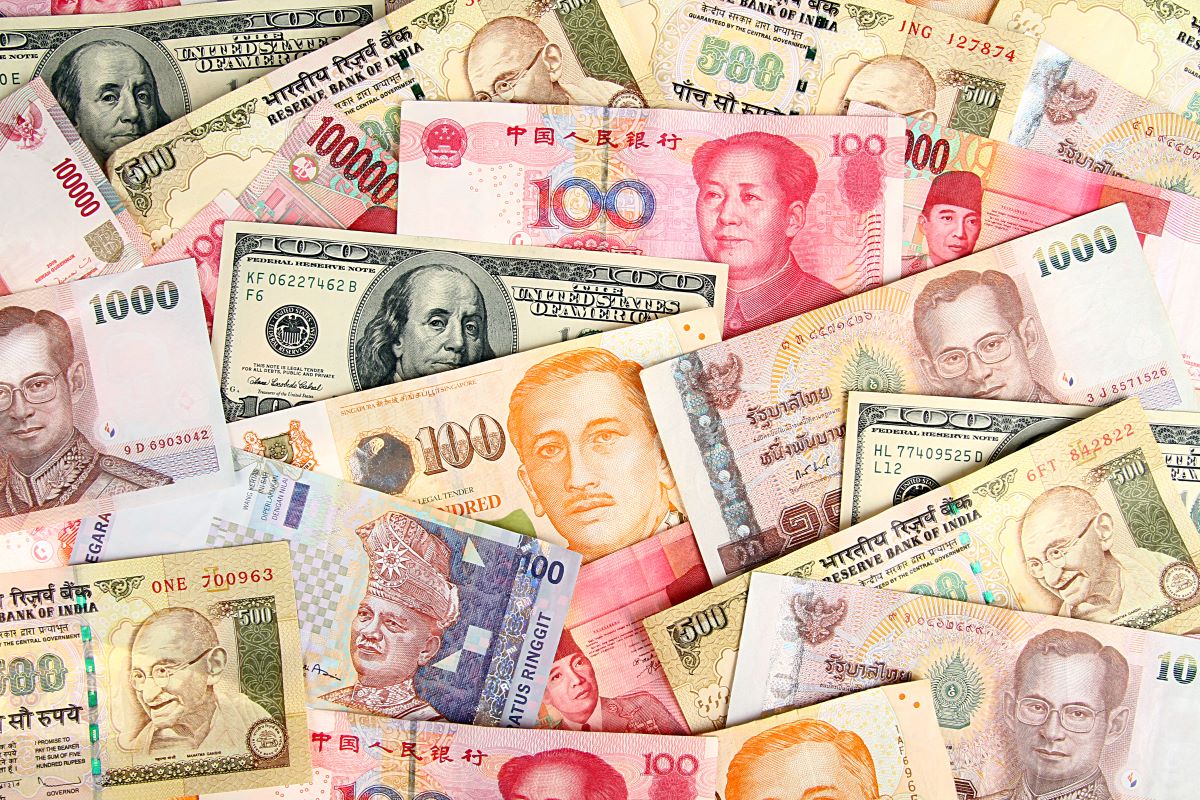The hawkish stance of the US Federal Reserve has weighed on Asian financial assets in 2022, and the most recent rate hike could have a significant impact on Asia. As global liquidity shrinks to counter inflation, Asia FX is in a precarious position as the dollar becomes an investor favourite.
“Monetary tightening in the US has led to investors pulling their money out of Asian economies, triggering currency depreciation in most of the economies,” says Asian Development Bank in a recently published blog.
The bank adds that sharp currency depreciation will increase inflationary pressures due to higher import prices and worsens the current account balance. While ADB acknowledges that Asia will face pressure due to monetary tightening in the US, the region is ‘well-placed to weather the consequences’.
How will Asia FX perform?
Japan has seen a divergence in its monetary policy stand compared to the rest of the world, with negative interest rates and yield curve control policies. The Japanese yen recently declined to levels last seen during the Asian financial crisis, prompting a forex market intervention that cost Japan about $21 bn.
“While the most obvious remedy for yen weakness would be a step towards higher rates from the BOJ, we think this is unlikely in the short term unless inflation makes a renewed push to even higher levels. The more likely choice would be some old-fashioned intervention if markets themselves lose faith in the yen,” says Nikko Asset Management in a note.
The yen had appreciated to as much as 140 against the dollar after the intervention by the Bank of Japan (BoJ), but the USD/JPY pair bulls are clawing back. After the US Fed’s rate hike move, prices are now moving back to the 145 level which had prompted the forex market intervention in the first place.
“At this point the carry for USD/JPY is still positive. So, there’s incentive for traders to investigate and be on the long side of such matters. And as the BoJ keeps rates low and in negative territory and as the US continues to hike, that incentive only grows,” writes James Stanley, senior strategist at DailyFX.
The yen has been the worst-performing currency in Asia FX, but other currencies are not too far as well. Another major currency in the region, China’s yuan, is on a slippery slope.
The USD/CNY has been bullish among Asia FX and has risen by over 10% this year as the yuan crashed. China has been slow on monetary policy tightening as it wants to maintain ample liquidity for growth. However, inflation and dollar pressure are slowly catching up with the currency.
“USDCNY and USDCNH are approaching 2019 and 2020 highs. But this time, there is an extra factor – a very weak EUR. So, we cannot rule out USDCNY and USDCNH passing 7.20 as aggressive Fed hikes stand out against the PBoC’s accommodative rate policy. The main worry of such a weak yuan is capital outflows. If there were any signal of such outflows becoming meaningful, the PBoC would first increase the cost of shorting the yuan offshore,” said ING in a note.
Swiss bank UBS sees USD being favoured when compared to most Asian currencies as high energy prices are adding downside pressure. “We expect USDCNY to reach 7.2 and USDJPY to hit 145 in the coming months as the latest FX intervention is unsustainable, in our view,” said UBS in an insights report.
“USD in Asia is set to push higher in line with risk aversion,” says insight provider Thomas Schroeder of Chart Partners who publishes on Smartkarma.
Elsewhere in Asia, the Korean won hit 1,400 against the greenback after the US Fed rate hike. This is the first time in over 13 years that the won has breached the 1,400 level, largely due to the wide gap between the US interest rates and South Korea’s benchmark rate. This could prompt massive outflows of foreign money from Korean financial markets causing currency depreciation.
Schroeder has given the USD/KRW pair a fresh target of 1,448.
The Indian rupee weakened past 81 against the dollar on news of the US rate hike and had closed at an all-time low of 81.67 on September 26.
“We expect the INR to range between 79-83 for rest of FY23 on the back of USD strength, risks for CAD remaining wider than usual and limited room for lesser FX interventions and let the INR depreciate gradually to address external imbalances. Some of the favourable factors could be lower crude and other commodity prices and FPI debt flows in case of an announcement of bond index inclusion,” Suvodeep Rakshit, Senior economist at Kotak Institutional Equities, told a local publication.
Any opportunity in Asia FX?
While the yuan and yen have caused significant damage to Asia FX, a further weakening of CNY could be a problem for emerging Asia currencies. “China may have outsized impact on EM Asia FX given exceptional policy uncertainty,” says Mizuho Group in a currency report.
Mizuho says EM Asia FX has shown resilience up till now against major currencies, but the USD strength may see EM currencies exposed to ‘catch down’ risks. However, analysts at the bank say that EM Asia FX may continue to perform in a starkly different manner.










 Australia
Australia China
China India
India Indonesia
Indonesia Japan
Japan Malaysia
Malaysia Philippines
Philippines Singapore
Singapore South Korea
South Korea Taiwan
Taiwan Thailand
Thailand Vietnam
Vietnam
 Germany
Germany Hong Kong
Hong Kong Switzerland
Switzerland Singapore
Singapore
 United Kingdom
United Kingdom








